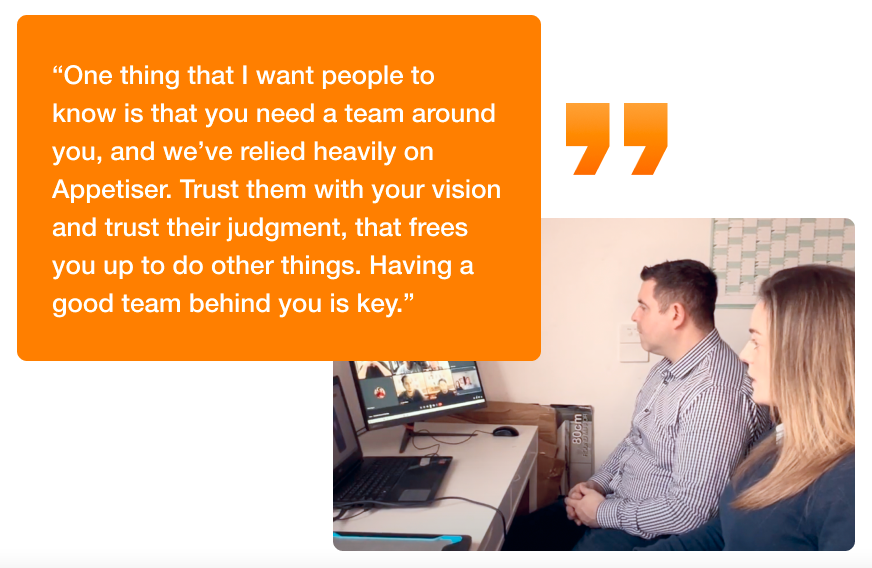How to Use App Design Proposal Template to Assess the Feasibility of Collaboration

One of the sweetest answers that app design and app development agencies would like to hear is “Yes” after the app design proposal is handed over to you.
But just like in an engagement, once the woman says yes to her fiancé, what comes next is a heavy word that must be translated into action: commitment.
What would make you feel assured when reviewing an app design proposal from a potential service provider? I’m sure you want that 100% commitment to completing the project and meeting deliverables.
In this article, I’ll explain the importance of using an app design proposal template before discussing app design and development in detail. Learn how spotting a well-written proposal can help you determine whether you are a perfect fit to proceed with the project with the service provider.
Why is an app design proposal template important?
A clear roadmap is indispensable when building apps for success to ensure that the project requirements and deliverables are met.
That’s why an app design proposal template organizes everything—from the mobile app design process to app design costs until the final product is delivered.
Here’s why it’s important to hand this over to you when working with app design and development teams:
- ✅ Provides comprehensive coverage. It ensures that essential elements are covered and match the requirements and information you have indicated in the app design brief.
- ✅ Strengthens client alignment. A structured app proposal defines the project scope and helps you make decisions and align expectations during the design and development process.
- ✅ Fosters trust and engagement. Having a clear understanding of what the design team is proposing also gives you a better picture of what to expect from them in your app’s design, functionalities, and features.
Therefore, an app design proposal isn’t just a paper in print or digital format before signing a contract. It’s like a blueprint of your vision but with specifications and quantitative elements.
It makes collaboration seamless, and you’ll be luckier if you and the app design and development team have a shared vision to make the project happen. This is precisely what happened when MUCUDU worked with Appetiser designers and developers, bringing the app to fruition.
Shortly after its launch, MUCUDU gained 1,000 early adopters, demonstrating strong initial interest and market penetration.

Now, let me unpack what’s inside the proposal in the next section.
What is included in an app design proposal?
How will you know if you and a potential design team are a perfect fit to build an app together? How the team communicates, whether in written or verbal forms, matters. If the design proposal covers everything you need to know, then that’s a green flag.
Here’s what a team elaborates on a proposal and why going through it mindfully will determine if the app design project will work out:
1. Executive summary
The executive summary offers a quick snapshot of the entire proposal. A well-written one helps you grasp the key points without reading the document. If you don’t have enough time to go through the lengthy proposal, this will give you a bird’s-eye view of what the app design team will do.
2. Project overview
The project overview is a foundation for more detailed planning and development stages outlined in the proposal, ensuring that all subsequent sections are consistent with the initial summary. This covers a detailed project description, including the background, the problem it aims to solve, and the proposed solution.
3. Goals and objectives
This section takes you to where you want to go as it clearly defines the goals of the app design and what the team intends to achieve, and it must also point out how they will address your needs during the design and development phase.
Clearly defined goals guide every decision, preventing scope creep and maintaining project coherence.
4. Target audience
This section includes the primary users of the app, including the demographics and behavioral characteristics to match the design and app functionality. If the proposal clearly states your target audience, it’s a good sign that your design team knows where to steer the wheel in the project.
Fleshing out the target audience with clarity is crucial when designers create the designs. A study by Forrester Research suggests that a well-conceived, frictionless user experience (UX) design could raise customer conversion rates by up to 400%.
5. Scope of work
The scope of work includes the project’s objectives, deliverables, timelines, and specific tasks that need to be accomplished. By having these elements well-defined, you avoid any ambiguity that could lead to misunderstandings between you and the design team.
6. Milestones and timeline
The milestones and timeline offer a transparent view of the project’s key phases and objectives. You can see exactly what will be delivered and when which helps set realistic expectations and reduces uncertainty.
Get the latest industry news first.
By outlining specific milestones, the app design team commits to delivering certain elements of the project by predetermined dates. This holds the team accountable and ensures that the project stays on track.
7. Budget and pricing
This section offers transparency on project finances, ensuring you grasp the costs upfront and can make informed decisions within your budget. It breaks down expenses by project stage, aiding in understanding cost distribution and assessing value delivered.
Having a transparent budget helps you plan and allocate resources based on priorities, whether you need an interactive prototype of an app or a functional MVP app to show to potential investors during your pitch in a funding round.
8. Design process
Understanding the design process helps you see the steps in transforming your app idea into a reality. It demystifies the complexities of app development and gives you a clear picture of what to expect at each stage.
A well-defined design process incorporates stages such as user research, prototyping, and user testing, which are essential for creating a user-centric app.
Vello, one of our clients, leveraged the power of app designs to attract potential investors and users. The design process is as clear as where Vello wants to go: Create a prototype first to validate the app idea and get app funding for the app development services.
Our team crafted a top-tier interactive prototype design, leading Vello to secure over $1 million in funding from investors.
9. Technical requirements
This section includes an overview of the technical aspects, such as platforms (iOS or Android), third-party services integration, and programming languages.
Having a well-documented set of technical requirements facilitates better communication among all project participants, including app developers, designers, product managers, project managers, and you, the prospective client.
Everyone clearly understands the project’s technical aspects, which helps align expectations and reduces the need for frequent clarifications.
10. Deliverables
This section covers the list of final products to be delivered to you, including source files, app store assets, and any documentation. Having a detailed list of deliverables in an app design proposal makes you fully aware of what you will receive upon project completion.
It sets a clear scope of work, helps prevent misunderstandings, and provides you with all the tools necessary for the app’s success and sustainability. It also establishes a basis for evaluating the completion and success of the project, as you can check off each deliverable as it is provided.
11. Terms and conditions
This section provides a legal framework that protects your interests and those of the designers. It includes provisions on intellectual property rights, confidentiality, and data protection, ensuring that your business information and any proprietary data involved in the app development are safeguarded.
For added information, you may read our article on how to patent an app idea to make sure you secure your vision and consult with the legal experts.
12. Sign-off
There’s a space for both parties to sign the proposal, indicating agreement to the terms and commencement of the project. The act of signing off fosters a transparent process where you are involved in the final acceptance of the mobile app development proposal.
This involvement is crucial for building trust between you and the design team, ensuring you feel confident in their proposed work and process.
Let an app design proposal take you where you want to go
Using an app design proposal ensures that every crucial aspect of your app’s development is meticulously planned and documented.
This involves defining your app’s scope, objectives, and expected outcomes to align your vision with the development team’s efforts.
Finding the right app designers can be challenging, as there are many agencies and professionals vying for your attention. Conduct thorough research to identify seasoned app design teams with a strong track record.
When it comes to a strong track record, you don’t need to look elsewhere. See for yourself and check Appetiser’s portfolio, which showcases different apps that users love, some of which are also valued in the billions.
Schedule a consultation call and check if we’re a perfect match. It’s a chance to discuss your unique requirements, seek clarifications, and assess how well the app design team aligns with your vision.

Maria Krisette Lim is a Content Marketing Specialist at Appetiser Apps. She has more than 13 years experience in producing content on the web and print ads. Krisette has a BSBA degree major in Business Management and Entrepreneurship. When she’s not tinkering with words and punctuation, she’s either curled up with a book while sipping hot tea, playing with her toddler or tinkering website builders.
Get the latest industry news first.


